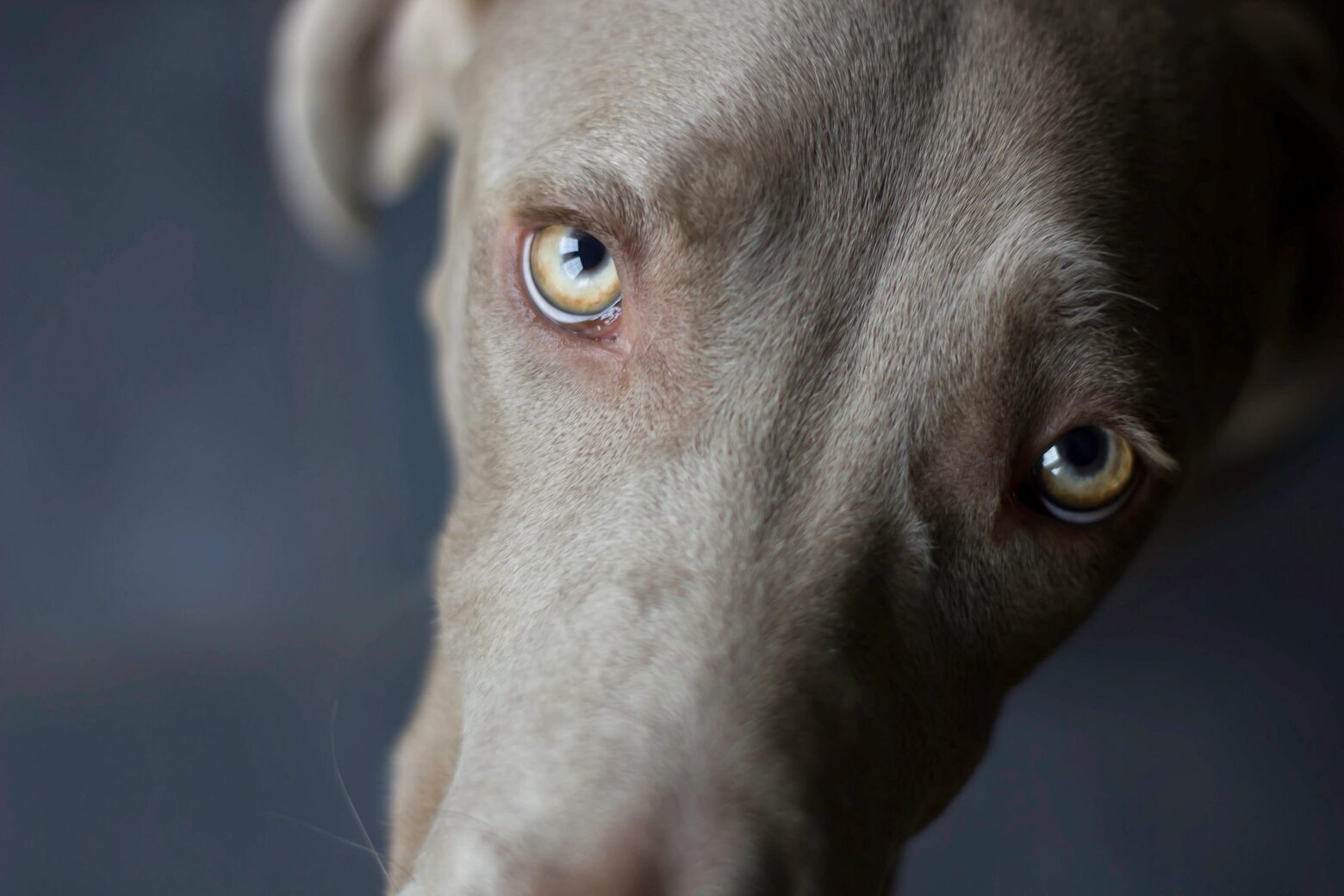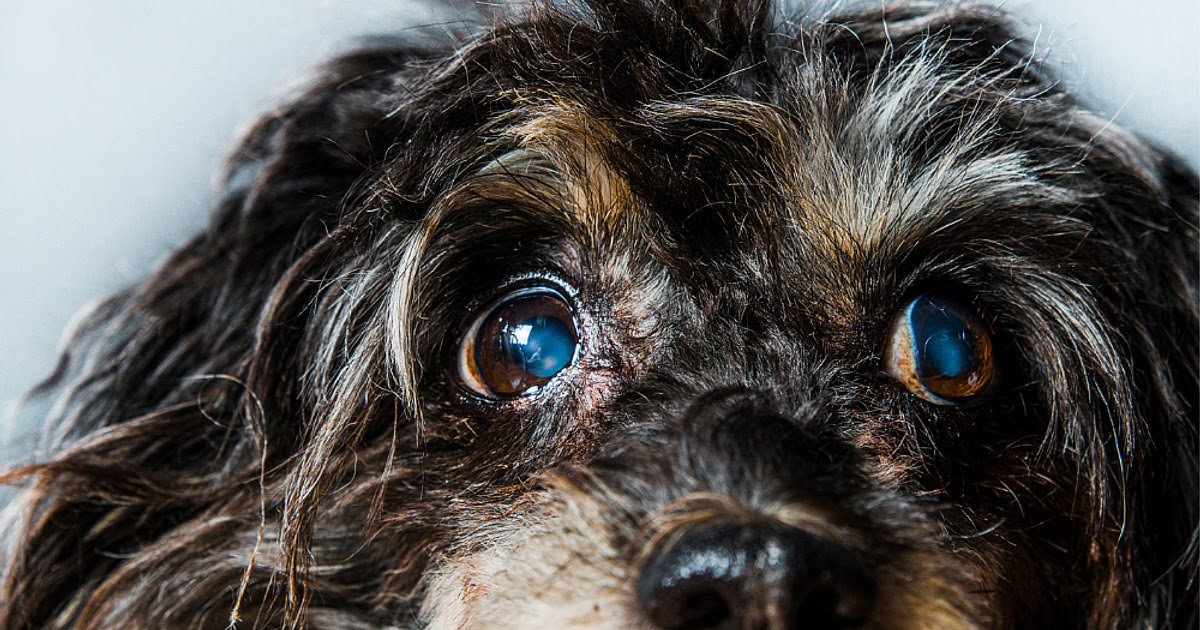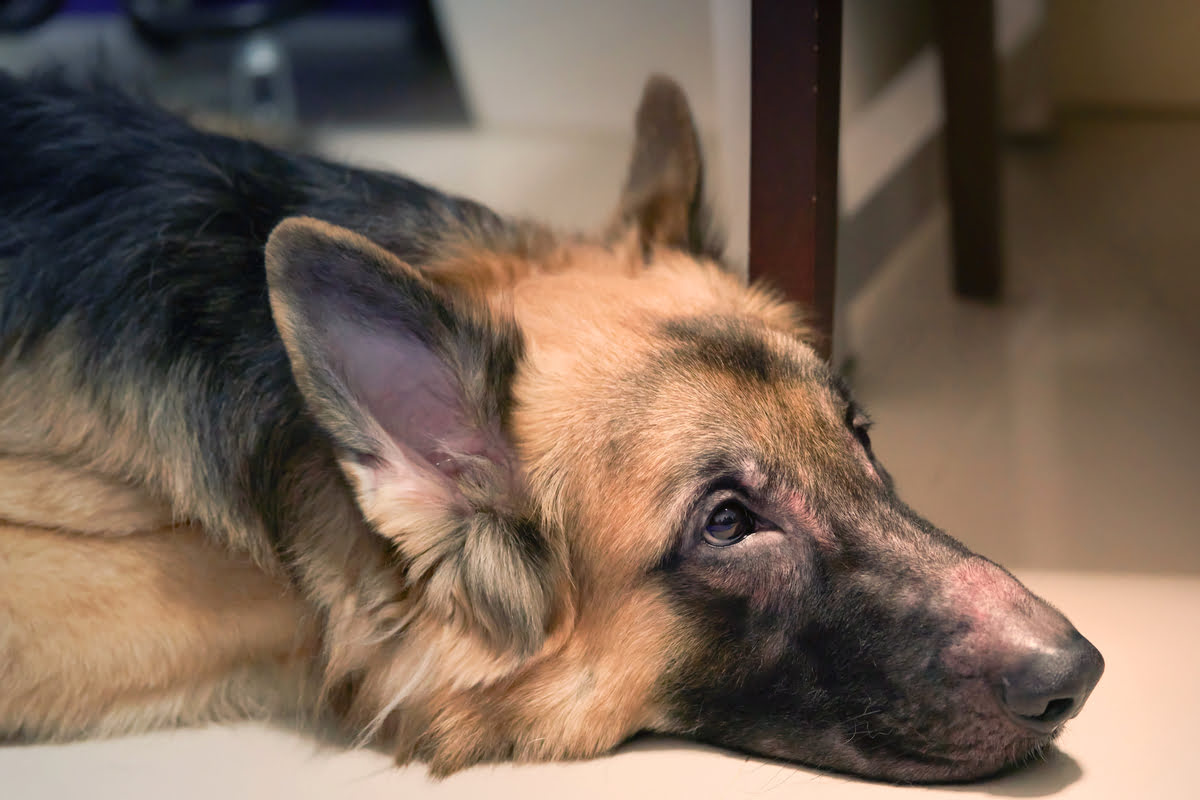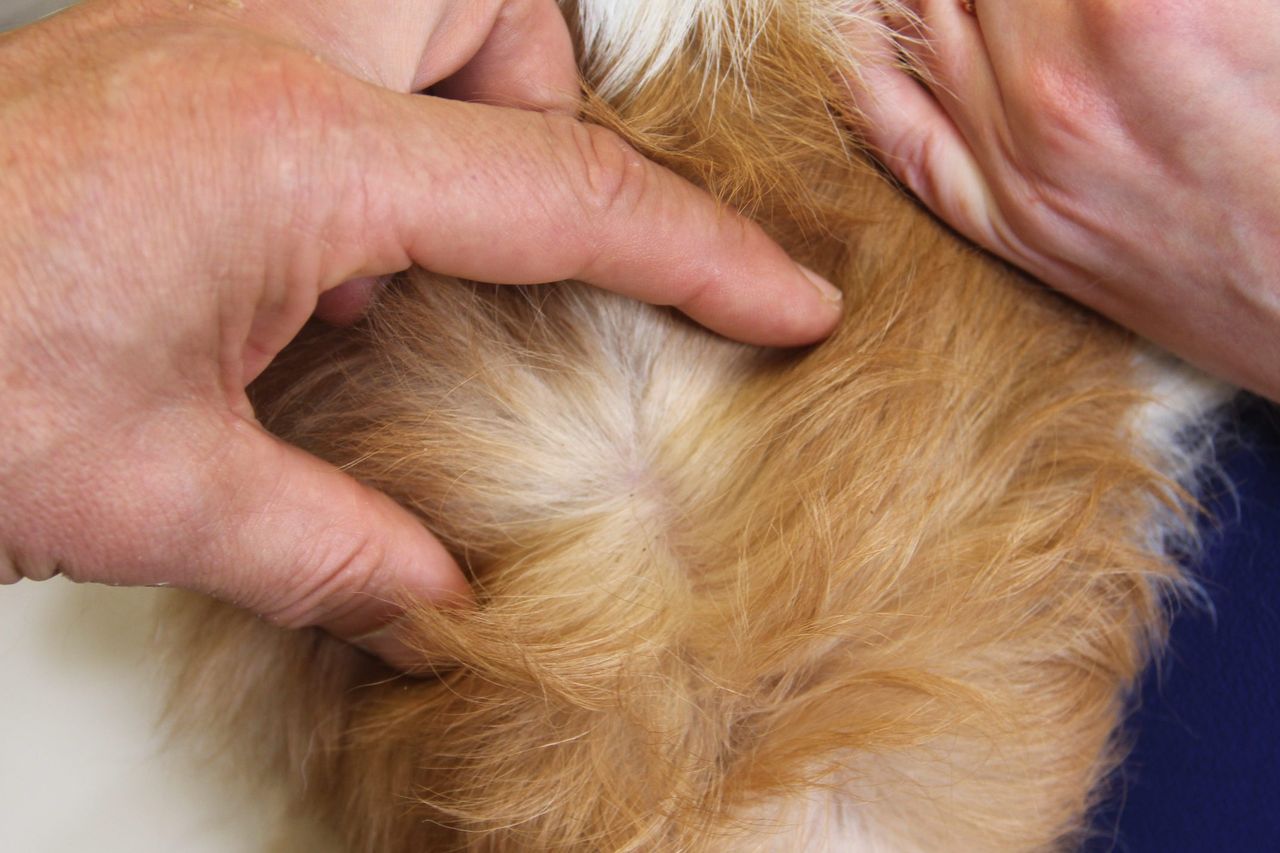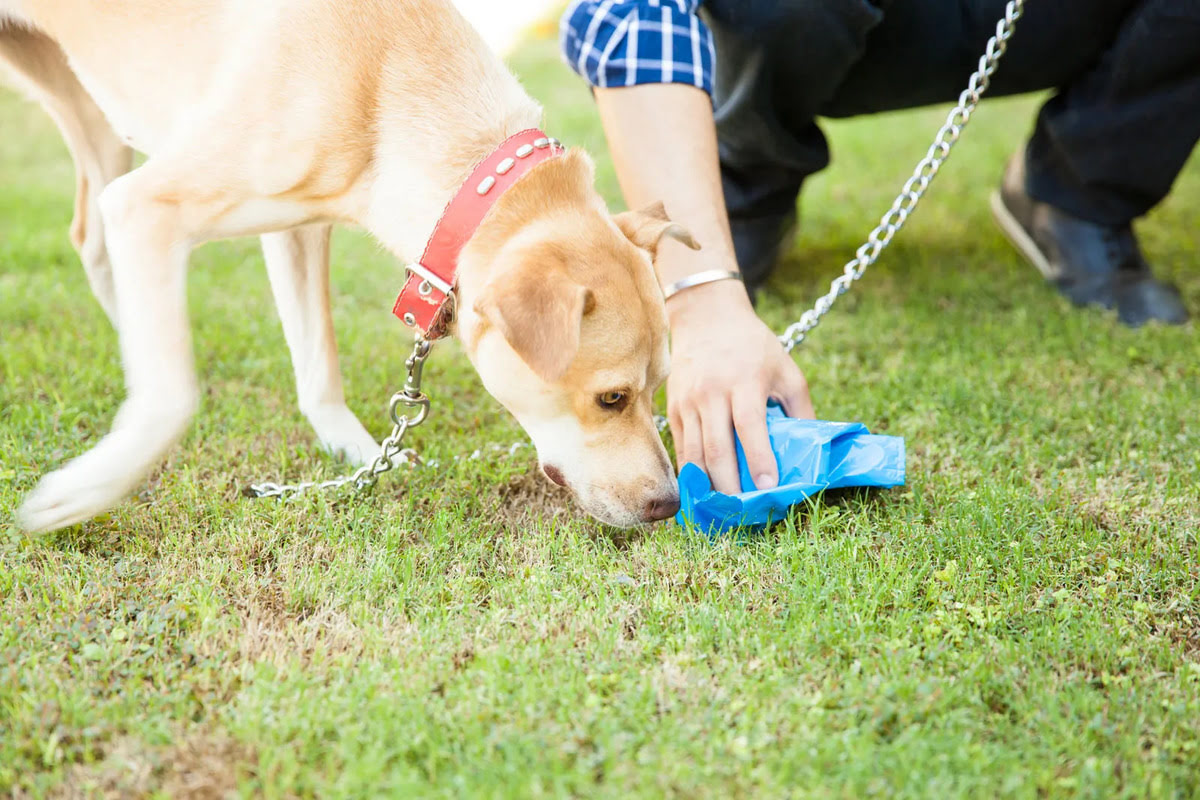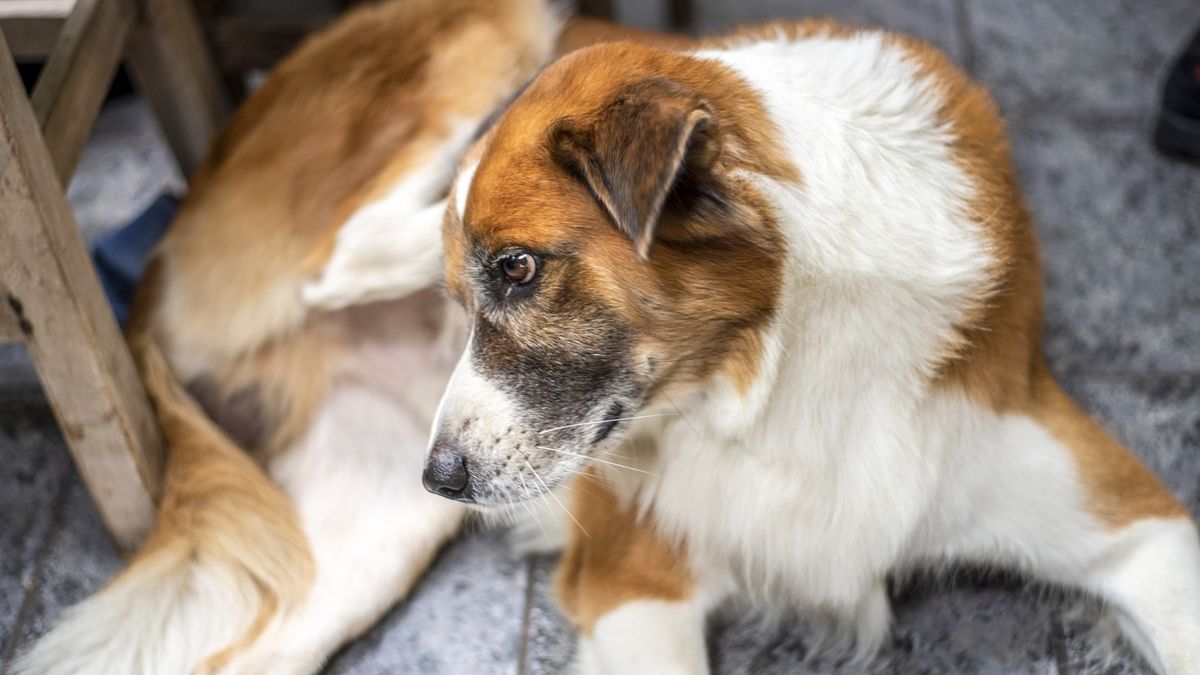Home>Health & Wellness>Common Health Issues>What Does Cancer On A Dog’s Skin Look Like
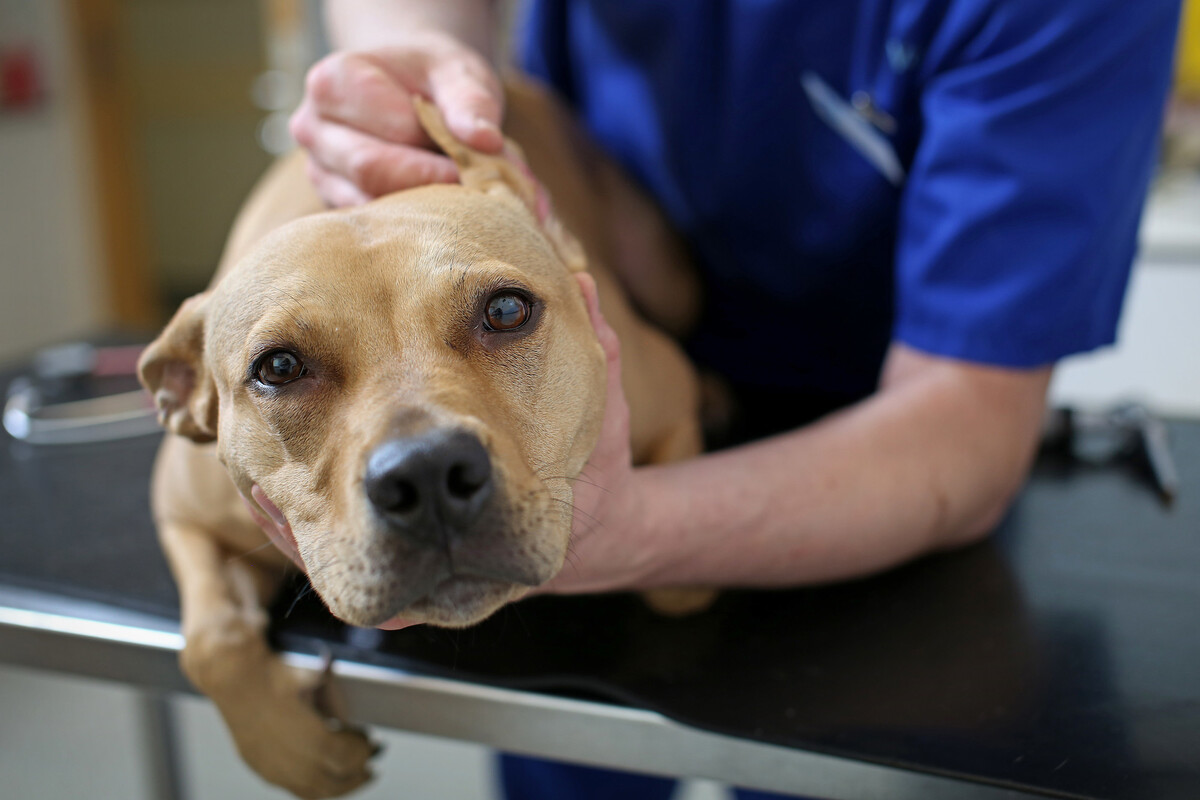

Common Health Issues
What Does Cancer On A Dog’s Skin Look Like
Published: February 4, 2024
Learn about common health issues in dogs, including what cancer on a dog's skin looks like. Understand the signs and symptoms to keep your pet healthy.
(Many of the links in this article redirect to a specific reviewed product. Your purchase of these products through affiliate links helps to generate commission for Pawsomeoldies.com, at no extra cost. Learn more)
Table of Contents
Introduction
Skin cancer is a concerning health issue that affects not only humans but also our beloved canine companions. As responsible pet owners, it's crucial to be vigilant about our dogs' well-being, including monitoring their skin for any signs of abnormalities. Understanding the nature of canine skin cancer, its symptoms, and available treatment options is essential for providing the best care for our furry friends.
In this comprehensive guide, we will delve into the world of canine skin cancer, shedding light on its various forms, symptoms, and potential treatment approaches. By gaining a deeper understanding of this prevalent health concern, we can empower ourselves to recognize potential warning signs and take proactive measures to safeguard our dogs' health and happiness.
Throughout this article, we will explore the common types of skin cancer that can affect dogs, the telltale signs and symptoms to watch out for, and the diagnostic and treatment options available. Additionally, we will discuss preventive measures that can help minimize the risk of skin cancer in dogs, ultimately promoting their overall well-being.
Join us on this enlightening journey as we unravel the mysteries of skin cancer in dogs, equipping ourselves with the knowledge and awareness needed to ensure the best possible care for our canine companions. Let's embark on this exploration of canine skin cancer, arming ourselves with the insights and understanding necessary to protect our furry friends from this prevalent health concern.
Read more: What Does A Tick Look Like In Dog Skin
Understanding Canine Skin Cancer
Canine skin cancer, also known as canine cutaneous neoplasia, refers to the abnormal growth of cells in a dog's skin. This condition can manifest in various forms, ranging from benign tumors to malignant cancers. Understanding the nature of canine skin cancer is crucial for pet owners, as it empowers them to recognize potential warning signs and seek timely veterinary care.
Skin cancer in dogs can arise from a multitude of factors, including genetic predisposition, exposure to ultraviolet (UV) radiation, and environmental influences. Certain dog breeds may be more susceptible to developing skin cancer, underscoring the importance of breed-specific awareness and vigilance. Additionally, prolonged sun exposure, especially in dogs with light-colored or thin fur, can elevate the risk of developing skin cancer.
The development of canine skin cancer often involves the uncontrolled proliferation of abnormal cells within the skin's layers. This can lead to the formation of lumps, lesions, or discolored patches on the dog's skin. While some skin growths may be benign and non-threatening, others can pose significant health risks and require prompt medical attention.
Understanding the potential causes and manifestations of canine skin cancer enables pet owners to actively monitor their dogs' skin health. Regularly inspecting the skin for any unusual lumps, sores that do not heal, or changes in pigmentation can aid in the early detection of skin cancer. By staying attuned to these visual cues, pet owners can promptly consult with a veterinarian if any concerning changes are observed.
Furthermore, comprehending the risk factors associated with canine skin cancer empowers pet owners to take preventive measures. Limiting a dog's exposure to direct sunlight, especially during peak UV hours, and providing adequate shade can help mitigate the risk of UV-induced skin cancer. Additionally, maintaining a healthy diet and lifestyle for dogs, along with regular veterinary check-ups, can contribute to overall skin health and potentially reduce the likelihood of skin cancer development.
In essence, understanding canine skin cancer involves recognizing its potential causes, manifestations, and risk factors. By arming themselves with this knowledge, pet owners can play a proactive role in safeguarding their dogs' skin health and well-being. This understanding serves as a cornerstone for early detection, timely intervention, and preventive measures, ultimately contributing to the overall health and happiness of our canine companions.
Signs and Symptoms of Skin Cancer in Dogs
Identifying the signs and symptoms of skin cancer in dogs is paramount for early detection and prompt intervention. While dogs may exhibit varying manifestations of skin cancer, several common indicators warrant close attention from pet owners. By familiarizing themselves with these telltale signs, pet owners can swiftly seek veterinary care if any concerning changes are observed.
Visible Skin Abnormalities
One of the primary signs of skin cancer in dogs is the presence of visible skin abnormalities. These may include the development of lumps or bumps on the skin, particularly those that appear to be growing in size or changing in texture. Additionally, sores that do not heal or exhibit persistent bleeding should raise concerns and prompt further evaluation by a veterinarian.
Changes in Pigmentation
Alterations in skin pigmentation can serve as a notable indicator of potential skin cancer in dogs. Pet owners should be attentive to any changes in the color or appearance of their dog's skin, such as darkened or discolored patches that emerge without an apparent cause. These changes may signify the presence of abnormal cell growth and should be thoroughly examined by a veterinary professional.
Read more: What Does Cancer On A Dog’s Toe Look Like
Persistent Itching or Irritation
Skin cancer in dogs can often lead to persistent itching, irritation, or discomfort in affected areas. Dogs may exhibit increased scratching, licking, or biting at specific regions of their skin, indicating underlying discomfort or sensitivity. Persistent irritation that does not subside with routine grooming or bathing warrants careful inspection and veterinary assessment.
Unusual Wounds or Lesions
The emergence of unusual wounds or lesions on a dog's skin can be indicative of potential skin cancer. These may present as non-healing sores, ulcerations, or scabbed areas that persist over time. Any unexplained or recurring wounds should be promptly evaluated by a veterinarian to rule out the possibility of skin cancer and initiate appropriate diagnostic measures.
Behavioral Changes
In some cases, dogs affected by skin cancer may exhibit behavioral changes that signal underlying discomfort or distress. This can manifest as reluctance to be touched or groomed in specific areas, heightened sensitivity to touch, or changes in overall demeanor. Observing and understanding these behavioral cues can provide valuable insights into a dog's potential skin health concerns.
By remaining vigilant and attuned to these signs and symptoms, pet owners can actively monitor their dogs' skin health and promptly seek professional guidance if any concerning changes are observed. Early detection and intervention play a pivotal role in addressing skin cancer in dogs, ultimately contributing to improved outcomes and the overall well-being of our beloved canine companions.
Common Types of Skin Cancer in Dogs
Skin cancer in dogs can manifest in various forms, each with distinct characteristics and implications for a dog's health. Understanding the common types of skin cancer that can affect dogs is essential for pet owners, as it enables them to recognize specific manifestations and seek appropriate veterinary care. The following are some prevalent types of skin cancer observed in dogs:
Read more: What Does Cancer Look Like In A Dog’s Mouth
1. Mast Cell Tumors
Mast cell tumors are among the most frequently diagnosed skin cancers in dogs. These tumors originate from mast cells, which are part of the immune system and play a role in allergic responses. Mast cell tumors can vary in appearance and behavior, ranging from small, benign growths to aggressive, malignant masses. They may present as raised lumps on the skin, often with a reddish or irritated appearance. Prompt evaluation by a veterinarian is crucial, as mast cell tumors can exhibit unpredictable behavior and require tailored treatment approaches.
2. Squamous Cell Carcinoma
Squamous cell carcinoma is another common type of skin cancer that affects dogs, particularly those with light-colored or thin fur. This type of cancer often arises from sun exposure and can manifest as raised, crusty lesions or sores on areas of the skin that are frequently exposed to sunlight. Squamous cell carcinoma necessitates timely intervention, as it can be locally invasive and has the potential to spread to other parts of the body if left untreated.
3. Melanoma
Melanoma, characterized by the abnormal growth of melanocytes, the cells responsible for skin pigmentation, can also affect dogs. While melanomas can occur in various locations, they are commonly observed in the mouth, toes, and mucous membranes. In dogs, melanomas can be benign or malignant, with malignant melanomas posing a higher risk of aggressive behavior and metastasis. Early detection and veterinary assessment are crucial for determining the nature of melanomas and devising appropriate treatment strategies.
4. Fibrosarcoma
Fibrosarcoma is a type of soft tissue sarcoma that can develop in the skin or underlying connective tissues of dogs. These tumors often present as firm, nodular masses beneath the skin and may exhibit rapid growth. Fibrosarcomas can be locally invasive and have the potential to spread to adjacent tissues. Veterinary evaluation and diagnostic imaging are essential for accurately assessing the extent of fibrosarcomas and formulating a comprehensive treatment plan.
Understanding the distinct characteristics and potential behaviors of these common types of skin cancer in dogs empowers pet owners to remain vigilant and proactive in monitoring their dogs' skin health. By recognizing the specific manifestations associated with each type of skin cancer, pet owners can promptly seek veterinary care and collaborate with professionals to devise tailored treatment approaches that prioritize their dogs' well-being.
Read more: What Does Eye Cancer Look Like On A Dog
Diagnosis and Treatment Options
Upon observing potential signs of skin cancer in their dogs, pet owners should promptly seek veterinary evaluation to facilitate timely diagnosis and treatment. The diagnostic process for canine skin cancer typically involves a comprehensive assessment of the dog's skin health, coupled with various diagnostic techniques to ascertain the nature and extent of the condition.
Diagnosis
Veterinarians employ a multifaceted approach to diagnose skin cancer in dogs, beginning with a thorough physical examination of the affected areas. This examination aims to identify any visible abnormalities, assess changes in skin pigmentation, and evaluate the presence of lumps, lesions, or sores. Additionally, veterinarians may perform fine needle aspirates or tissue biopsies to obtain cellular samples for microscopic analysis. These diagnostic procedures enable the identification of abnormal cell growth and aid in determining the specific type and severity of the skin cancer.
In certain cases, advanced imaging techniques such as ultrasound, X-rays, or CT scans may be utilized to assess the extent of the cancer, particularly if there are concerns about potential spread to underlying tissues or organs. These imaging modalities provide valuable insights into the localization and potential impact of the cancer, guiding the formulation of an effective treatment plan.
Treatment Options
The treatment of skin cancer in dogs is tailored to the specific type, stage, and location of the cancer, as well as the overall health and well-being of the dog. Treatment options may encompass a combination of medical interventions, surgical procedures, and adjunctive therapies aimed at addressing the cancer and promoting the dog's recovery.
Surgical Excision
For localized skin cancers, surgical excision is often employed to remove the cancerous growth along with a margin of healthy tissue to minimize the risk of recurrence. This approach is commonly utilized for tumors that are deemed operable and have not metastasized to other areas. Following surgical excision, the excised tissue is typically sent for histopathological examination to confirm complete removal and assess the margins for any remaining cancerous cells.
Radiation Therapy
In cases where surgical intervention may be challenging or when the cancer has a high likelihood of recurrence, radiation therapy may be recommended. This targeted treatment modality aims to destroy cancer cells and inhibit their ability to proliferate. Radiation therapy can be particularly beneficial for addressing tumors in sensitive or difficult-to-access areas, and it is often employed as part of a comprehensive treatment plan for certain types of skin cancer.
Chemotherapy
In instances of advanced or metastatic skin cancer, chemotherapy may be considered to impede the spread of cancer cells and alleviate associated symptoms. Chemotherapeutic agents are administered to target and disrupt cancer cell growth, with the specific regimen tailored to the individual dog's condition and overall health. While chemotherapy may entail potential side effects, its use is guided by the goal of enhancing the dog's quality of life and managing the progression of the cancer.
Palliative Care and Supportive Measures
In cases where skin cancer cannot be entirely eradicated, palliative care and supportive measures play a crucial role in maintaining the dog's comfort and well-being. This may involve pain management, wound care, and supportive therapies to alleviate discomfort and enhance the dog's overall quality of life. Additionally, nutritional support and attentive monitoring are integral components of comprehensive care for dogs undergoing treatment for skin cancer.
By leveraging a combination of diagnostic modalities and tailored treatment approaches, veterinarians strive to address skin cancer in dogs with a focus on promoting the dog's health and well-being. Collaborative decision-making between pet owners and veterinary professionals is pivotal in devising a comprehensive treatment plan that aligns with the dog's individual needs and optimizes their prospects for recovery and long-term wellness.
Read more: What Does A Tick Scab Look Like On A Dog?
Preventing Skin Cancer in Dogs
Preventing skin cancer in dogs encompasses a proactive approach aimed at minimizing risk factors and promoting overall skin health. By implementing preventive measures and lifestyle adjustments, pet owners can play a pivotal role in safeguarding their dogs from the potential onset of skin cancer. The following strategies and practices can significantly contribute to the prevention of skin cancer in dogs:
Limiting Sun Exposure
Limiting a dog's exposure to direct sunlight, especially during peak UV hours, is crucial for mitigating the risk of UV-induced skin cancer. Providing ample shade and ensuring that dogs have access to shaded areas during outdoor activities can help reduce their exposure to harmful UV radiation. Additionally, scheduling walks and outdoor playtime during the early morning or late afternoon, when the sun's intensity is diminished, can further minimize UV-related risks.
Protective Clothing and Accessories
For dogs with light-colored or thin fur, protective clothing and accessories such as UV-blocking shirts, hats, and sunglasses can offer additional defense against UV radiation. These specialized garments provide a physical barrier to UV exposure and can be particularly beneficial during extended outdoor excursions. Pet owners can explore a range of canine-specific sun-protective apparel designed to shield their dogs from the sun's harmful rays.
Sunscreen Application
Applying pet-safe sunscreen to areas of exposed skin, such as the nose, ears, and belly, can help mitigate the impact of UV radiation. Pet owners should opt for sunscreen products specifically formulated for dogs, as human sunscreen may contain ingredients that can be toxic to pets. Regularly applying sunscreen to vulnerable areas, especially for dogs with light-colored or thinly haired skin, can contribute to reducing the risk of UV-induced skin cancer.
Regular Veterinary Check-ups
Routine veterinary check-ups play a crucial role in monitoring a dog's overall health, including their skin condition. Pet owners should prioritize regular visits to the veterinarian, allowing for comprehensive skin examinations and early detection of any potential abnormalities. Veterinarians can provide valuable guidance on skin health and offer insights into preventive measures tailored to a dog's specific needs and risk factors.
Balanced Nutrition and Hydration
Maintaining a balanced diet and ensuring adequate hydration are fundamental aspects of promoting a dog's overall well-being, including their skin health. A nutrient-rich diet that supports skin resilience and immune function can contribute to minimizing the risk of skin cancer. Additionally, providing access to clean, fresh water at all times is essential for supporting proper hydration and skin health.
Environmental Awareness
Being mindful of environmental factors that can impact a dog's skin health is integral to preventive care. This includes avoiding exposure to potential carcinogens, such as certain chemicals, pesticides, and environmental toxins. Pet owners should strive to create a safe and toxin-free environment for their dogs, minimizing potential skin irritants and carcinogenic substances.
By integrating these preventive measures into their dogs' daily lives, pet owners can proactively reduce the risk of skin cancer and promote optimal skin health. This proactive approach, coupled with regular veterinary care and attentive monitoring, empowers pet owners to prioritize their dogs' well-being and minimize the potential impact of skin cancer. Through these concerted efforts, pet owners can contribute to fostering a healthy and vibrant life for their beloved canine companions.
Conclusion
In conclusion, the realm of canine skin cancer encompasses a multifaceted landscape of potential risks, manifestations, and preventive measures. By delving into the intricacies of skin cancer in dogs, pet owners gain valuable insights that enable them to actively monitor their dogs' skin health, recognize potential warning signs, and seek timely veterinary care when needed. Understanding the common types of skin cancer, such as mast cell tumors, squamous cell carcinoma, melanoma, and fibrosarcoma, equips pet owners with the knowledge necessary to navigate the complexities of this prevalent health concern.
The signs and symptoms of skin cancer in dogs serve as crucial indicators that prompt vigilant observation and proactive intervention. By remaining attuned to visible skin abnormalities, changes in pigmentation, persistent itching or irritation, unusual wounds or lesions, and behavioral changes, pet owners can play an active role in safeguarding their dogs' well-being. Early detection and prompt veterinary assessment are pivotal in addressing skin cancer, ultimately contributing to improved outcomes and the overall health of canine companions.
The diagnostic and treatment options available for skin cancer in dogs underscore the importance of collaborative decision-making between pet owners and veterinary professionals. From comprehensive physical examinations and diagnostic imaging to tailored treatment approaches such as surgical excision, radiation therapy, and chemotherapy, the focus remains on promoting the dog's health and well-being. Additionally, palliative care and supportive measures play a vital role in maintaining the dog's comfort and quality of life throughout the treatment process.
Preventing skin cancer in dogs involves a proactive approach that encompasses limiting sun exposure, utilizing protective clothing and accessories, applying pet-safe sunscreen, prioritizing regular veterinary check-ups, maintaining balanced nutrition and hydration, and fostering environmental awareness. By integrating these preventive measures into their dogs' daily lives, pet owners can significantly reduce the risk of skin cancer and promote optimal skin health.
In essence, the journey through the landscape of canine skin cancer empowers pet owners to become proactive advocates for their dogs' well-being. By arming themselves with knowledge, awareness, and a commitment to preventive care, pet owners can navigate the complexities of skin cancer with confidence and compassion. Through these concerted efforts, pet owners contribute to fostering a healthy and vibrant life for their beloved canine companions, ensuring that they receive the care and attention they deserve.

